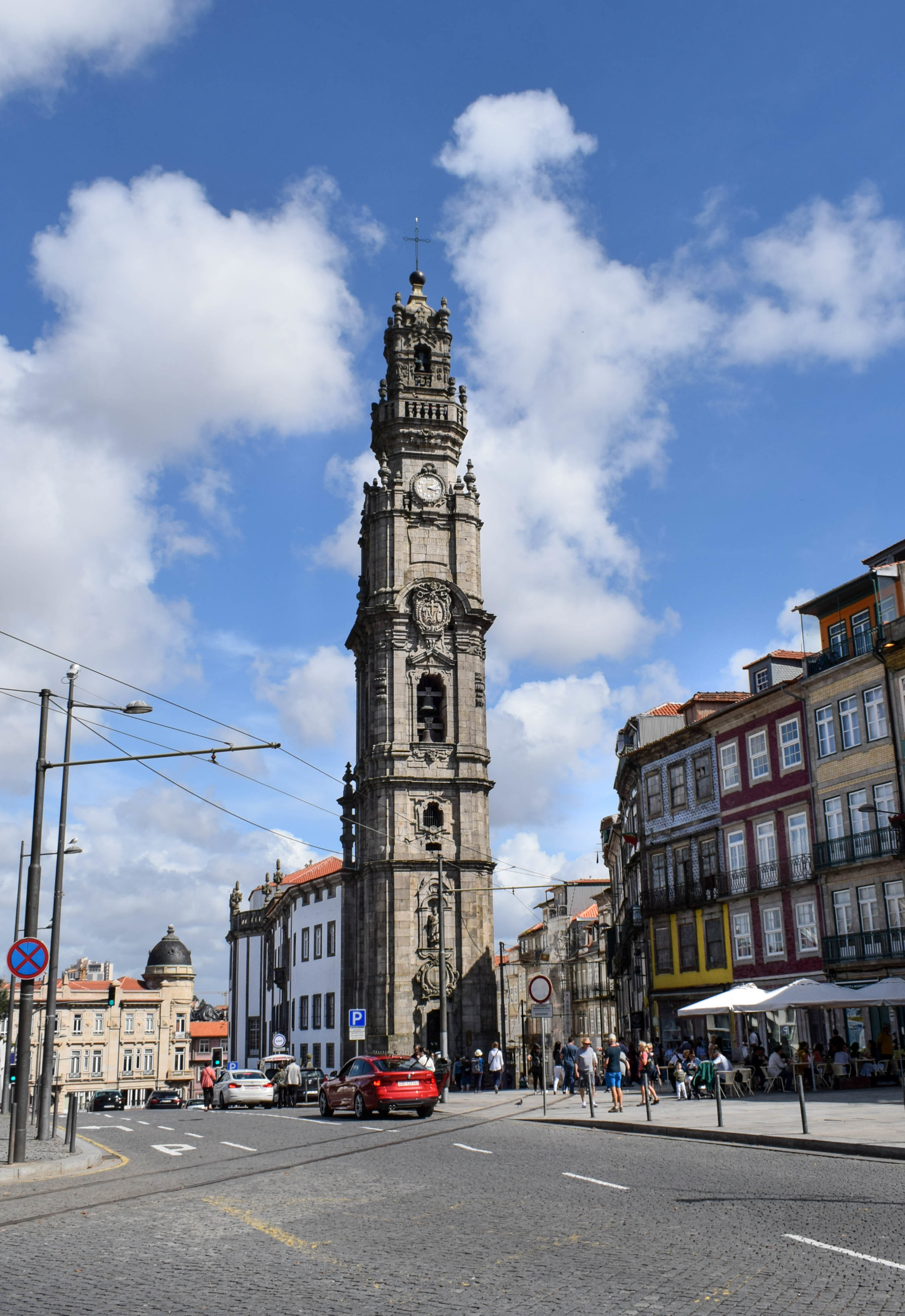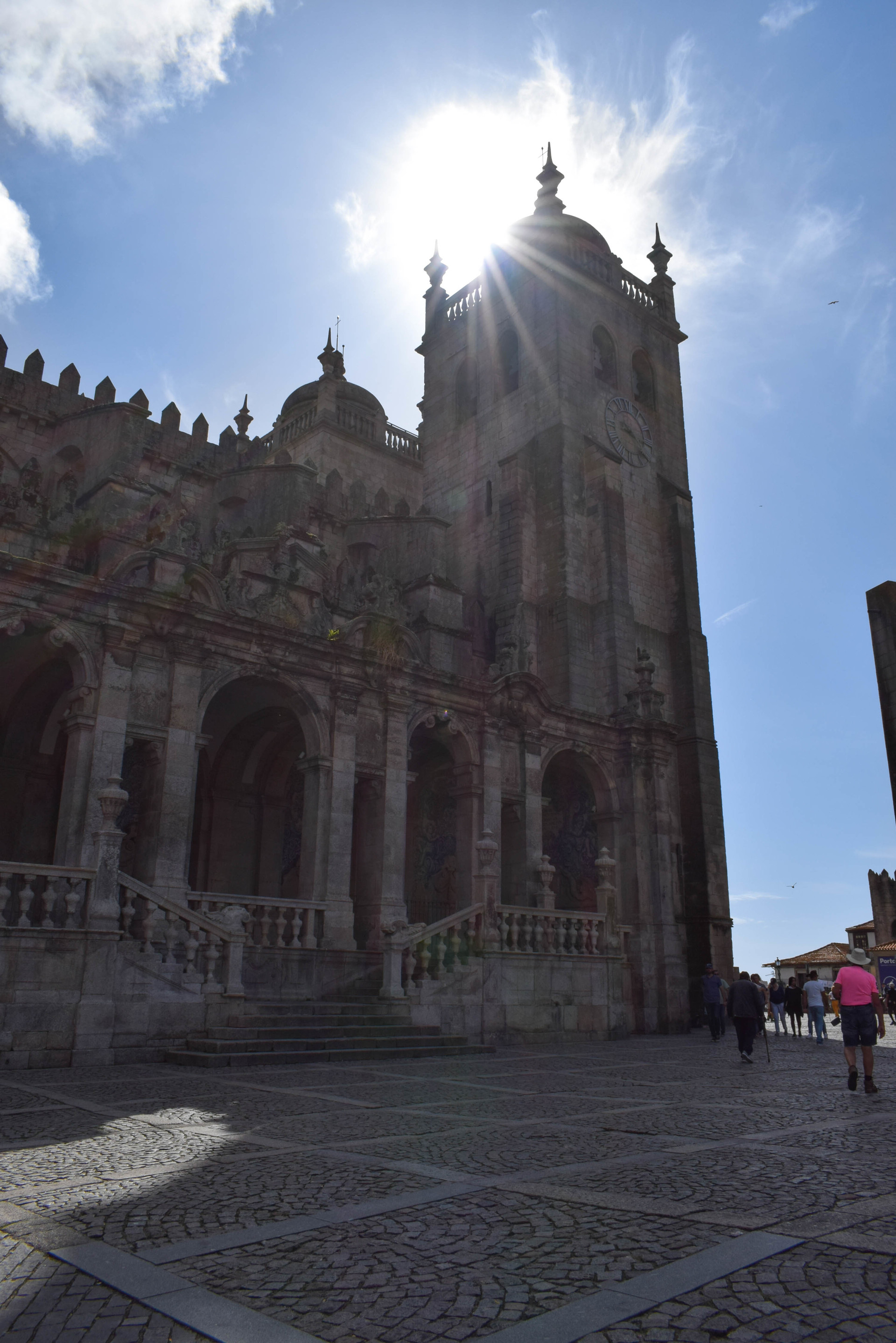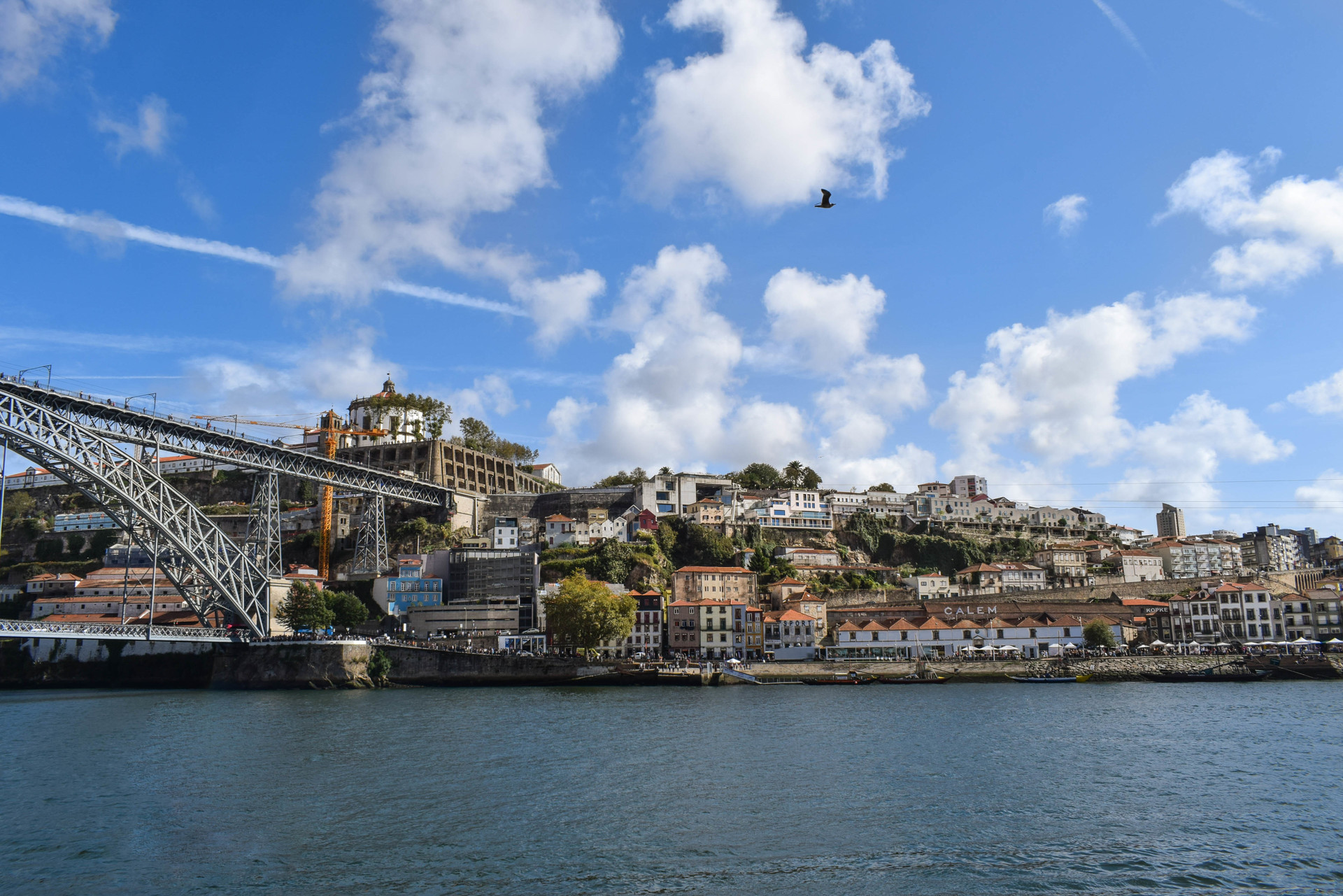A trip to the cultural capital of Portugal - Porto
It is not a surprise that Porto is called the ‘Culture capital’ of Portugal. With its colorful narrow streets leading to a beautiful Ribeira (riverside), Porto is a dream that came true to many.
It is the second-largest city in Portugal and as such it offers a lot to its visitors. Many people visit it simply to go to the beautiful riverside of the Douro river, others would just wander around its colorful streets and historic buildings. However, people like me would do both for sure, as Porto is a city that offers bizarre vistas and lots of places for exploration.
I loved Porto since the first day I have visited it. It has been on my list for a long time and since I was already doing my Erasmus in Barcelos in Portugal, I decided to visit it as soon as possible. Thus, below I am sharing some useful information and tips on how to get there, what to explore, what to eat and how to go around it.
How to get to Porto?
There are many ways to go to the city of Porto and one of them is simply by catching a plane. Nowadays, there are lots of cheap options with low-cost airlines that can bring you to Porto for less than 20 euros in a couple of hours.
Another way to go to Porto is by train. I went there by train from Barcelos and it took around an hour to Porto and costed me around 4 euros. However, if you want to go from Lisbon (or any other Portuguese city), this might cost you from 20 to 40 euros each way. Keep in mind that the trip from Lisbon to Porto by train might take from 3 hours and a half to 5 hours or more depending on the type of train. However, you can always ask at the ticket office about that and also about a discount on your ticket. Yes, you can get a discount on your ticket of 25% if you are 25 years old or under by just showing your passport.
Last but not least, you can get to Porto by bus and there are many companies like Flixbus or Rede Expressos (Portuguese bus company) that offer cheap tickets to the cultural capital of Portugal. However, bear in mind, that if you book your tickets with Flixbus earlier you can get a much lower price for the ride and Rede Expressos also offers a discount for people that are under 29 years old.
The best places to visit in Porto
Porto is a big city and it has a lot to offer when it comes to visiting awesome places. Below I have included the best places to visit while you are in Porto.
Clérigos Tower
The Clérigos tower was built in the 18th century and was considered the tallest building in Portugal at the time. It was built entirely in Baroque style by an Italian architect, who made sure that this is the most beautiful tower and indeed it still is.
Clérigos tower is one of the notable symbols of Porto and I would recommend you to visit it. The price of the ticket is 5 euros per person and that includes the entrance to the tower and Clérigos museum. Speaking from experience, it is worth it and the view from the tower over Porto is simply amazing! However, if you want to visit only the church inside it is free of charge.
Furthermore, if you just want to relax somewhere, you can go to Jardim da Cordoaria (Cordoaria's Garden), which is next to the tower of Clérigos.

Lello Bookshop
If you are a Harry Potter fan that is the right place for you! Livraria Lello is the oldest bookshop in the world and is believed to be the inspiration for JK Rowling to write about the Hogwarts library in the Harry Potter books.
Even if you are not a Harry Potter fan this bookshop is a must-see. Especially, with its magnificent wooden ceilings and the red stairs leading to the second floor of the store. However, to enter the bookshop you have to purchase a ticket online from their website, which costs 5 euros and this price will be deducted if you purchase a book. Bear in mind that there are lots of people waiting in line to get in the bookstore, so it might take a while before you enter.
Igreja do Carmo
The Carmo church is one of the most beautiful churches in Portugal and it gathers lots of visitors, because of its beautifully covered in blue azulejos exterior. It was built in the 18th century in the same Baroque Rococco style as the Clérigos tower and later the tiles were added to its side. If you want to enter the church it is free of charge and you will for sure enjoy it.
There is something about the Carmo church I would like to share with you. And that is that there is another church exactly next to it. Igreja das Carmelitas is the other church next to Carmo and they seem almost glued to each other.
However, the more interesting thing is that what keeps them separate is Portugal’s tiniest house! Yes, there is a house between the two churches and you can get inside of it. It has the smallest sitting room and kitchen I have ever seen, not to mention the steep stairs that you have to climb. If you want to get inside of the house there is a small fee of 3.50 euros, which also includes the church’s catacombs and the rooms over the church, which have a lot to show of that time.
Additionally, if you would like to check out other beautifully tile-covered churches you can consider going to Capela das Almas or Igreja de Santo Ildefonso. Those two churches are also in the city center and can be easily reached without the need for using public transport.

Cathedral of Porto
The Cathedral of Porto or Sé do Porto, as the Portuguese call it, is a historic monument in the heart of the old town of Porto. It was built back in the 12th century and since then has been restored a couple of times. That is why there are a couple of architectural styles that can be noticed within the cathedral. Although, the predominant architectural styles are Baroque and Gothic style.
There is no entrance fee to enter the cathedral. However, if you want to visit the Cloister of the cathedral it costs 3 euros and I totally would recommend you doing that. The Cloister itself is built entirely in the Gothic style in the 14th century and from it, you can visit the Treasury of the cathedral, which is absolutely astonishing!

São Bento railway station
São Bento station is one of the most beautiful railway stations you will ever see. Built at the beginning of the 20th century and covered in 20,000 tiles all over, São Bento is definitely a mush-see!
Fun fact is that the tiles in São Bento are depicting the main historical events of Portugal, which is an absolutely astonishing artwork.
The Ribeira
The Ribeira is the neighbourhood of Porto that keeps the traditions alive. Many say that it is, in fact, the soul of Porto. I would say that this is true. All the streets are full of color and life, Portuguese traditional music (Fado) can be heard everywhere and that is for sure the vibe of Porto. So, just make sure to get lost and wander a little bit there, so that you can feel that positive vibe.

Dom Luís I Bridge
After your wandering in Ribeira, you can head to the iconic double-decked bridge of Porto. It is impressive from the side and is even more mesmerizing when you are on it. You can choose to either go from below or above.
If you choose the first option, this will lead you to the other side of the riverside where you can find cheaper restaurant options and enjoy some traditional meals. However, if you choose to go from above you will end up at Jardim do Morro, where most of the locals gather to watch the sunset.

Miradouros of Porto
The best miradouros or vistas in Porto can be found on the hilltops of the city. One of them is the Miradouro da Vitória, which is set in the old Jewish neighbourhood. From there you can see the other side of the riverside called Gaia, the Luís bridge, the Sé do Porto and the wine cellars of the city. It is a mesmerizing view for sure!
Another good viewpoint in Porto might be the Jardins do Palácio de Cristal from where you can see more of the other side of the Douro river. It is a nice viewpoint and it feels cozy and chill during the day.
However, if you wish to watch from the other side of the Douro river, it is better to go to Gaia where you will find plenty of places where you can just sit and enjoy the view of Porto. While in Gaia you can even go to one of the beaches of Porto and get some tan.
The beaches in Porto
There are lots of beaches that you can pick from in Porto. Some of the beaches that you can visit near Porto are Gondarém beach, Praia do Carneiro and Praia dos Ingleses. You can visit them by walking or by bus.
If you plan to walk to the beaches it takes around 40 minutes to an hour from the city center. However, if you plan to get there faster you can catch bus 200 or 202 and the ride will be around half an hour. You can find their bus stops near Praça de Mouzinho de Albuquerque and the ticket to the beach costs the price of a regular bus ticket in Porto 1.80 euros.

Food in Porto
While in Porto you won’t be left unfed for sure. There are plenty of options to choose from when it comes to food. One of my favorite traditional meals is Francezinha. It is a huge toast filled with meat, traditional Portuguese sausages, steak, lots of cheese and egg on top. In addition to that caloric bomb, you get lots of French fries around it in a tasty sauce. You can get such a meal for around 7-8 euros depending on the district you are in.
If you are not into eating stuffed sandwiches you can get a Bacalhau à Bras. It is a dish with codfish, potatoes, and eggs to which are added lots of onion and garlic. Speaking from experience, I can tell that Portuguese people are absolutely crazy about codfish (Bacalhau) and you can expect to find it in lots of meals while in Portugal.
Last but not least, desserts! Don’t miss out on the fresh Pastel de Natas or the Portuguese type of éclair. Delicious!
Transport in Porto
In Porto, you can use almost all means of transport, including metro, buses, trains, trams, cars, boats or funiculars. Personally, for me, the best way to get around is the metro, which has 6 operating lines. If you plan to use the metro, it is better to purchase an Andante card and add titles to it depending on which zone you are going to. You can buy the card either from the airport when you arrive, the train station or from the tourist offices.
Another fast option for buying the card is from the machines that are available at every metro station. Here you can find more information about the Andante cards: https://www.stcp.pt/en/travel/tariffs/cards/
The price of the Andante card charged with occasional tickets is 60 cents and you can recharge it whenever you need to. However, the price of the ticket depends on the zone, which might vary from 1.20 euros to 5.40 euros each way.
One of the most important metro stations is Trinidade because it connects all 6 metro lines. Thus, you can change to every line in Porto there. However, I would say that the station of Casa da Música is also a good point from where you can catch the metro directly to the airport or change a line, as most of the lines are also going through there.

I can say for sure, that Porto became one of my favourite cities in Portugal. With its culture and history gathered in such a fine way, it creates a feeling that you will miss once you leave it.
Photo gallery
Content available in other languages
Want to have your own Erasmus blog?
If you are experiencing living abroad, you're an avid traveller or want to promote the city where you live... create your own blog and share your adventures!
I want to create my Erasmus blog! →























Comments (0 comments)